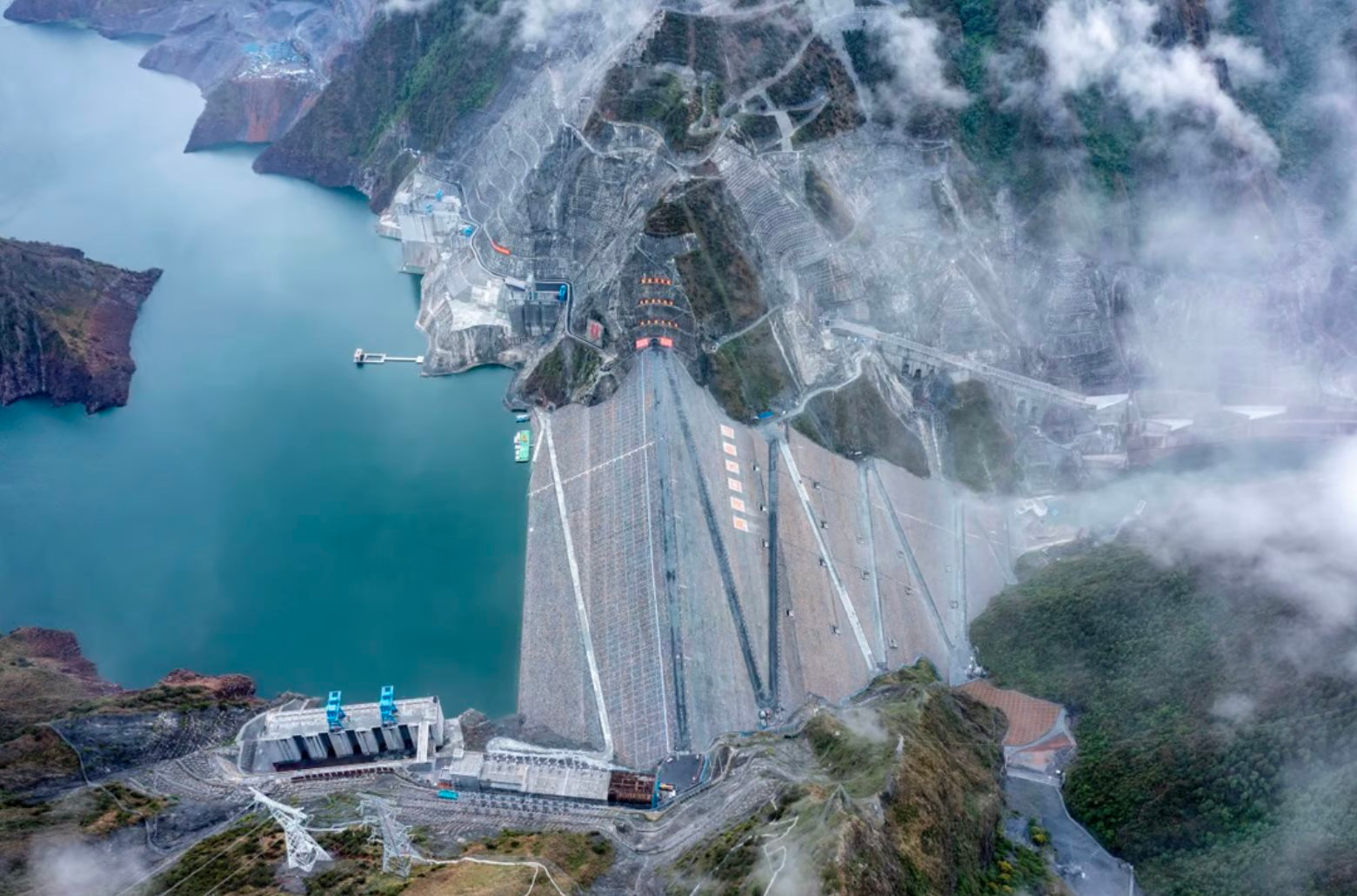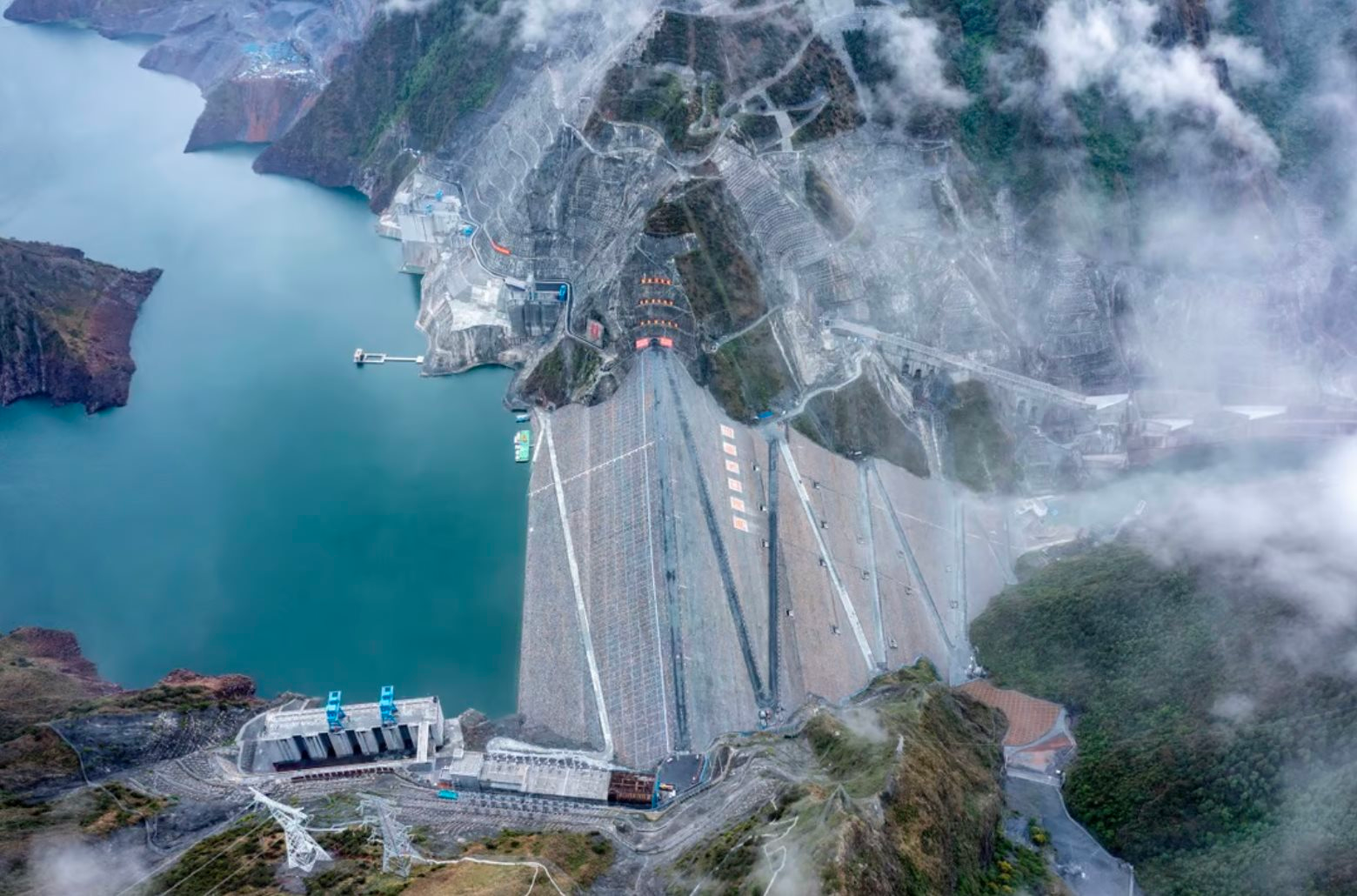China officially operates the world’s largest photo-hydroelectric power plant: Generating 2 billion kWh of electricity per year, located at an altitude of nearly 5,000 meters, providing energy for 700,000 households
- Tram Ho

It is known that this plant owns solar panels with a capacity and a hydroelectric power generation plant with a capacity of 3 gigawatts, in the Ya Lung River plateau in Sichuan province. Accordingly, the plant can produce 2 billion kilowatts of electricity per hour per year, equivalent to the energy consumption of more than 700,000 households in one year.
The plant is part of a large-scale renewable energy production facility planned by China to provide clean energy to 100 million households on a 1,500-kilometer-long river, Chinese media said.

Kela factory solar power station.
Kela hydroelectric power plant is located on a mountain in Yajiang district, Ganzi province, Sichuan, at an altitude of 4,600 m above sea level and 1,000 m above Lhasa, the highest city in the world. Accordingly, this is the highest hydroelectric power project in the world.
The operation of a “hybrid” plant between solar and hydroelectricity to promote the production of energy from hydroelectricity to support photovoltaic.
Electricity generated by the photovoltaic plant is transported via lines to the Mesopotamia hydroelectric power station, 50 km away. Then, the energy generated by the solar and hydroelectric power stations is “summing up” and fed into the grid.
This design helps to ensure a balance when photovoltaic is not stable, which generates more electricity during the day and less electricity at night, more electricity on sunny days than on cloudy days. In addition, the system can also generate electricity for a longer period of time, allowing photovoltaics to generate more electricity during the dry season and to produce more hydroelectricity during the rainy season.
This technology solves the inherent problem of connecting solar power to the grid safely, avoiding waste, and compensating for the weaknesses of solar power that is dependent on the weather. “This is a prime example of large-scale, centrally operated clean energy development,” Xinhua said.
The Kela plant is the world’s first “hybrid” power station with a GW capacity. Previously, the same plant – with a capacity of 850,000 kW, was located at the Longyang Dam in Qinghai province. This is the first phase of a clean energy project in the Nha Lung River area. According to Chinese media, the project has reached a capacity of 20 GW and is expected to reach the target of 50 GW by 2030.

Kela hydroelectric power plant.
“When this clean energy project is completed, the plant’s capacity will exceed 100 GW, producing about 300 billion kilowatt-hours per year for 100 million households,” Xinhua said.
SCMP said that the Kela factory project is of great significance both in terms of scale and complexity in construction. With 52,7000 steel poles supporting the solar cells, if connected end to end, the system would span over 1,400 km.
The steel used for the solar panel frames weighs nearly 50,000 tons, enough to build another “Bird’s Nest” Stadium in Beijing.
The project covers an area of more than 16 million square meters, has more than 2 million solar panels with a capacity of 1 GW, can fully charge 15,000 electric vehicles with a distance of 550 km in just one hour.
Since the site of the factory is in the western Sichuan plateau – 4,000 – 4,600 m above sea level, the construction workers had to work in extremely cold weather. At this height, construction was only possible in less than half a year. At the most urgent time, workers had to install 7,000 pedestals, 1,200 solar panel holders, 33,000 solar panels and 30 transformer boxes in 24 hours.
Kela project manager – Yang Zhiwei, told CCTV: “Currently, the clean electricity produced by the Kela plant every year can meet the electricity demand of about 700,000 households. The project is estimated to generate a capacity of 2 billion kWh of electricity per year, equivalent to more than 600,000 tons of coal, thereby helping to reduce more than 1.6 million tons of CO2 emissions.
Refer to SCMP
Source : Genk
